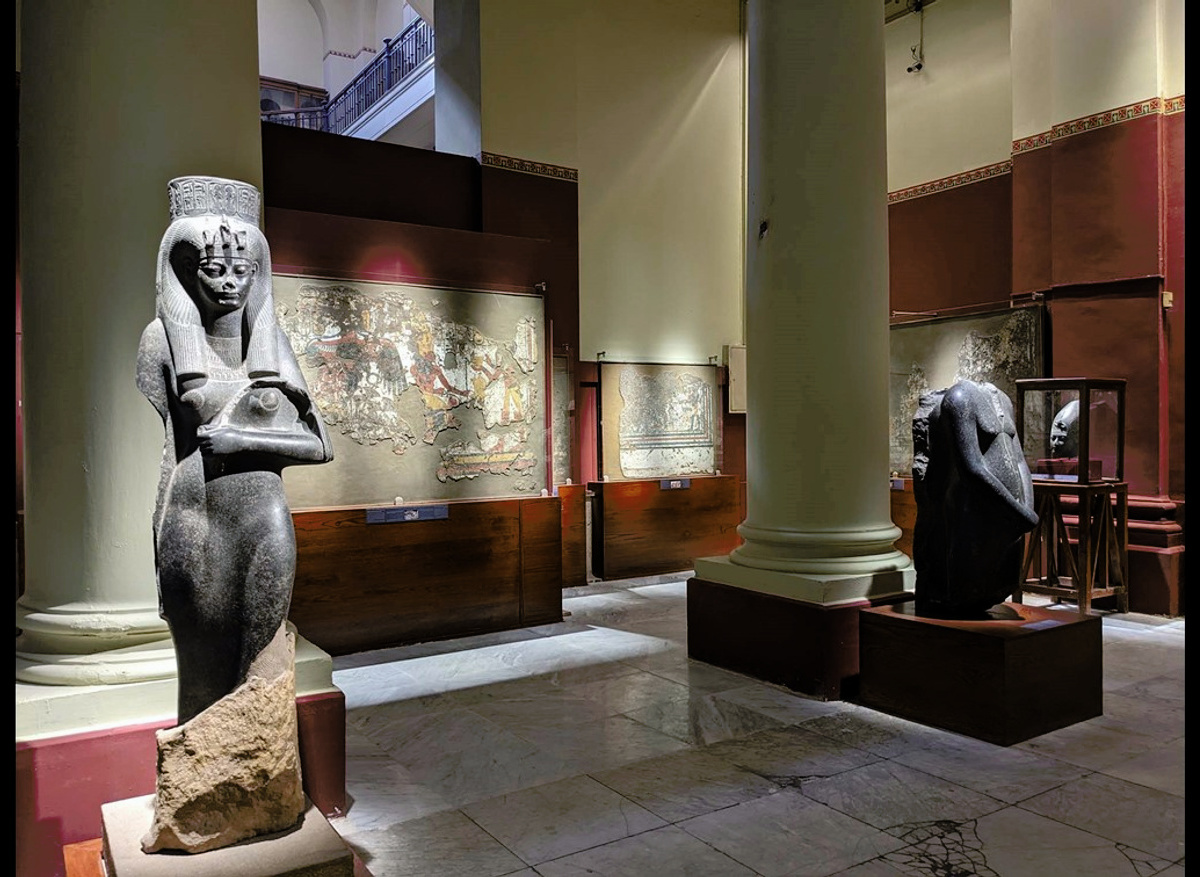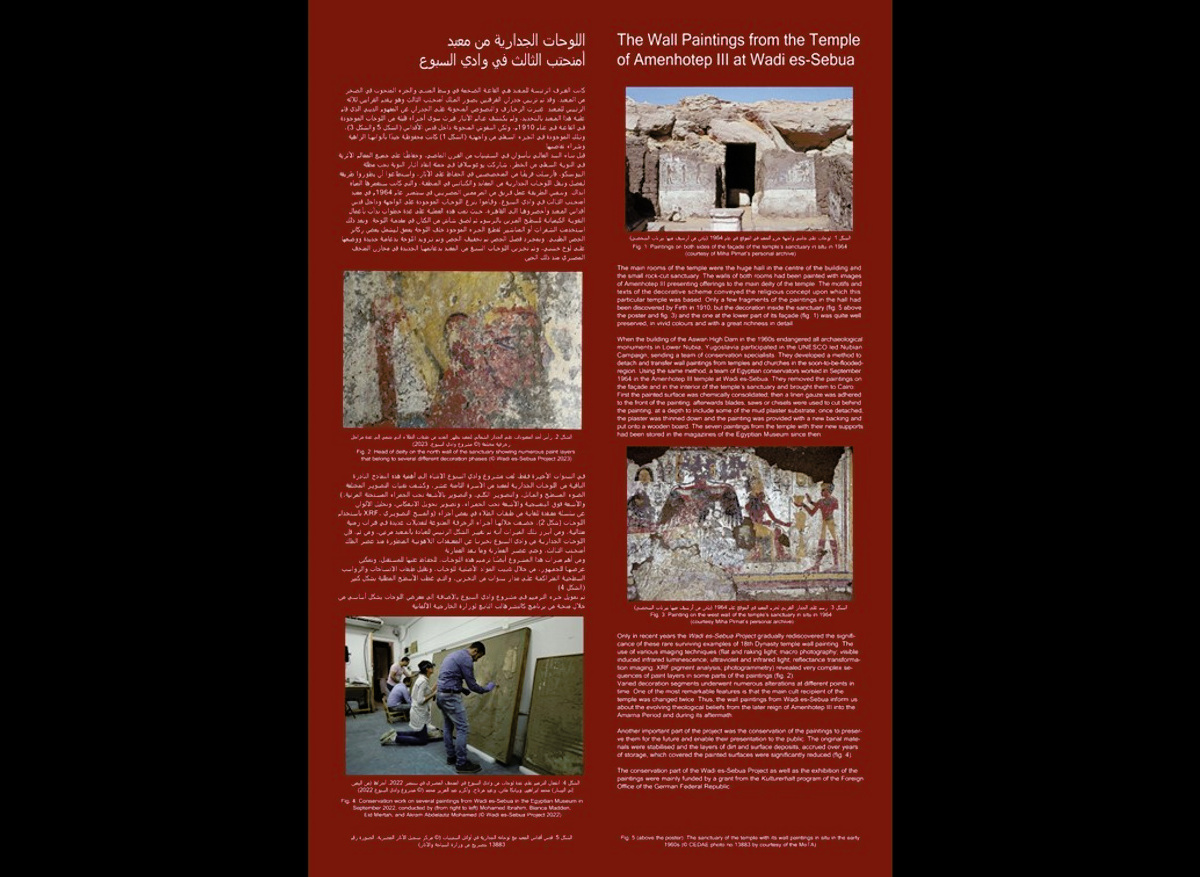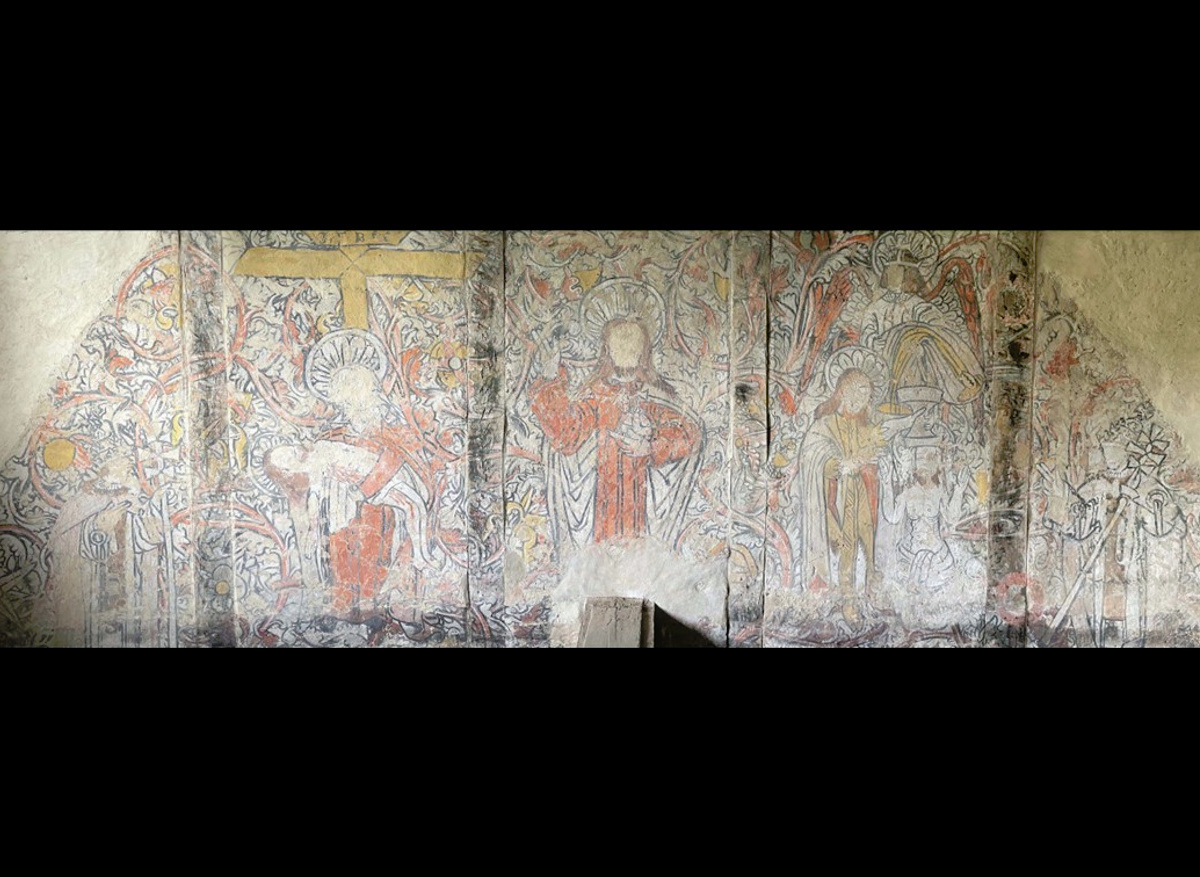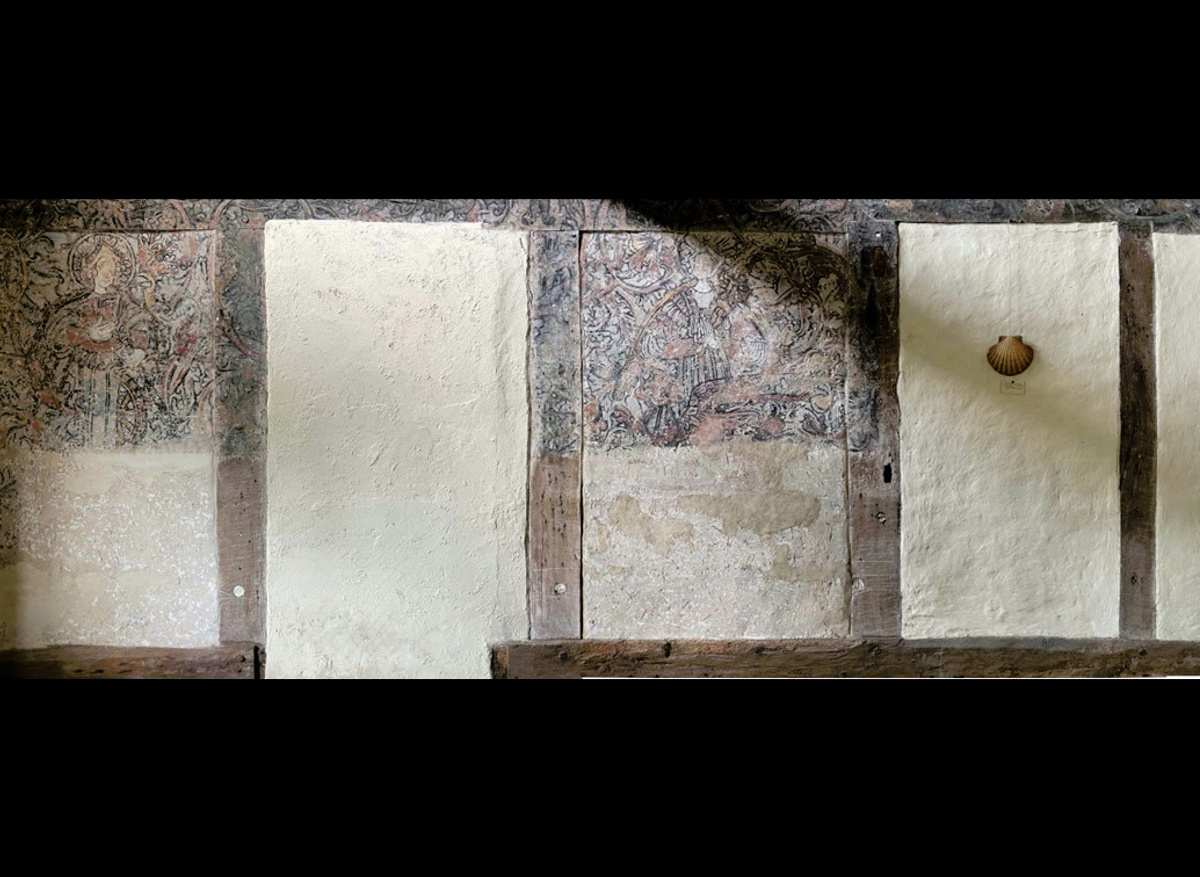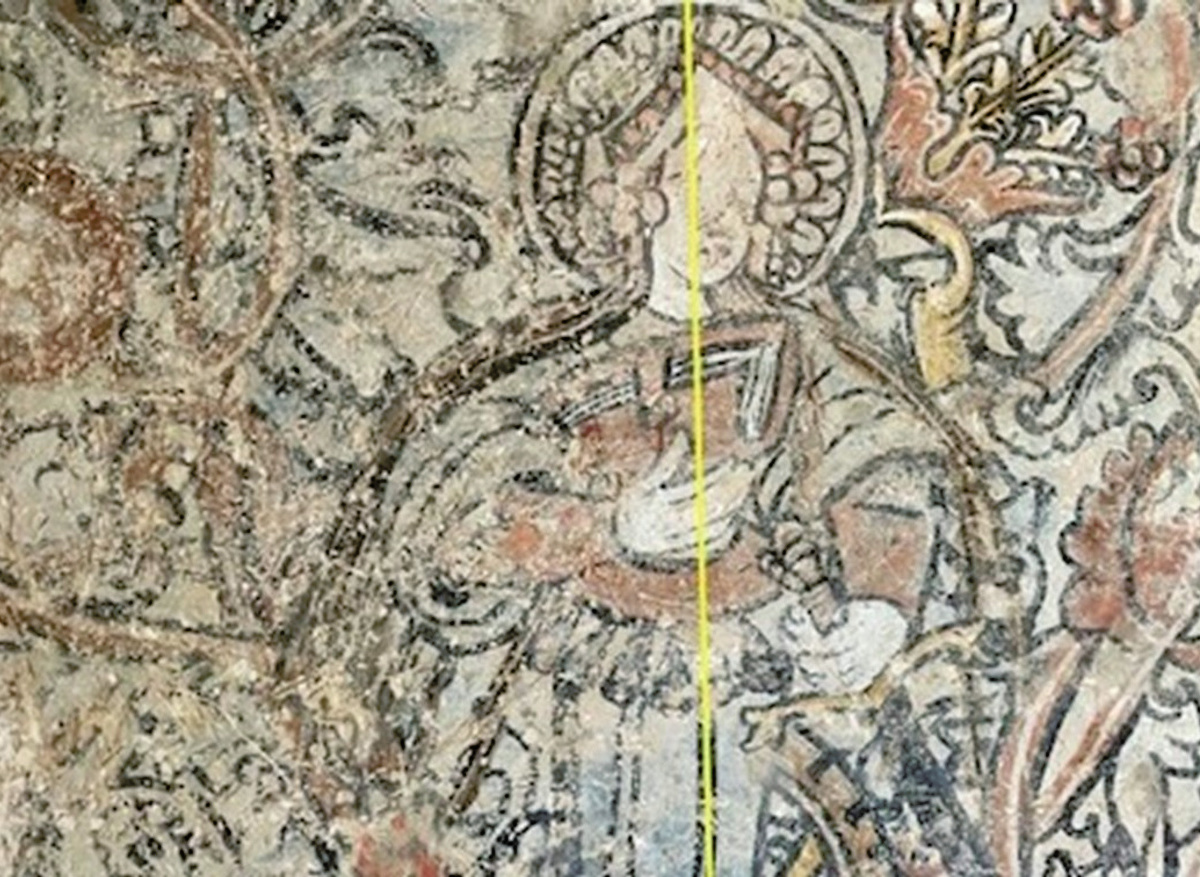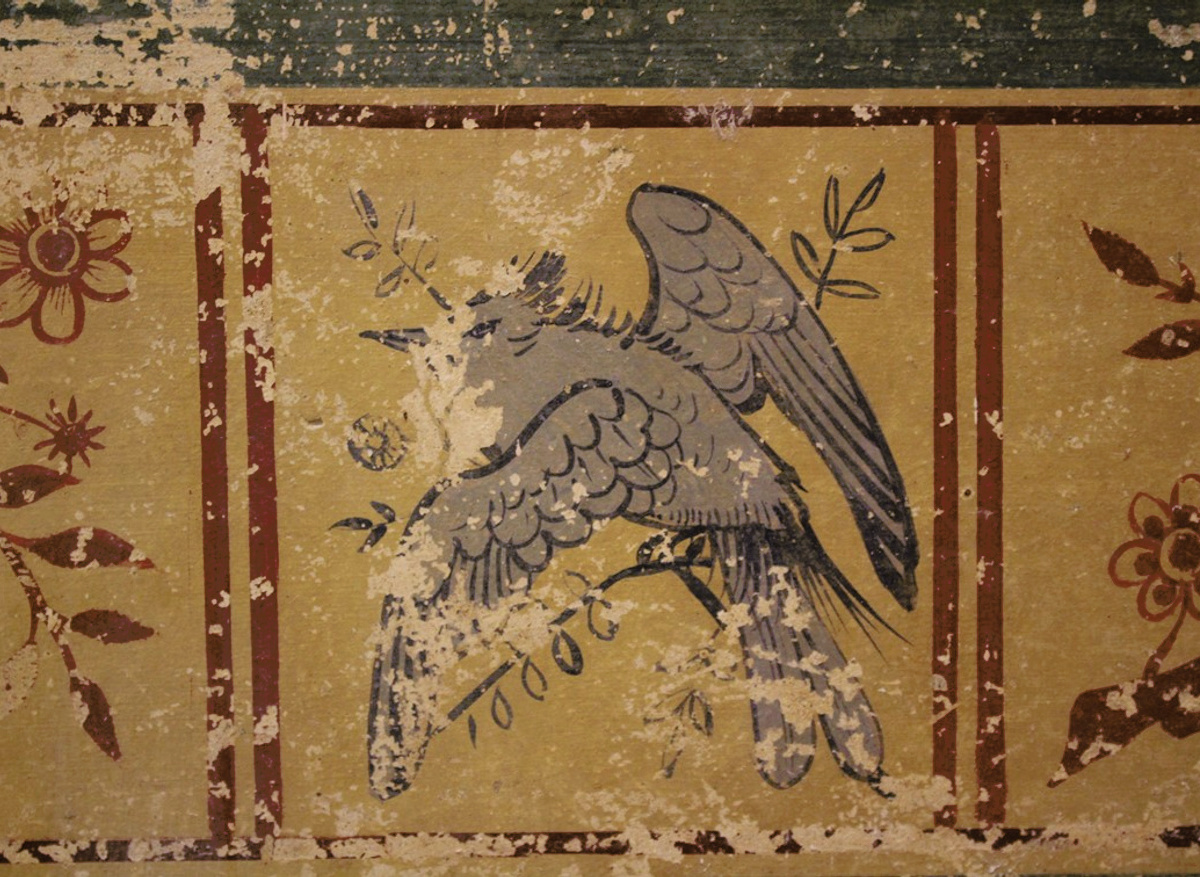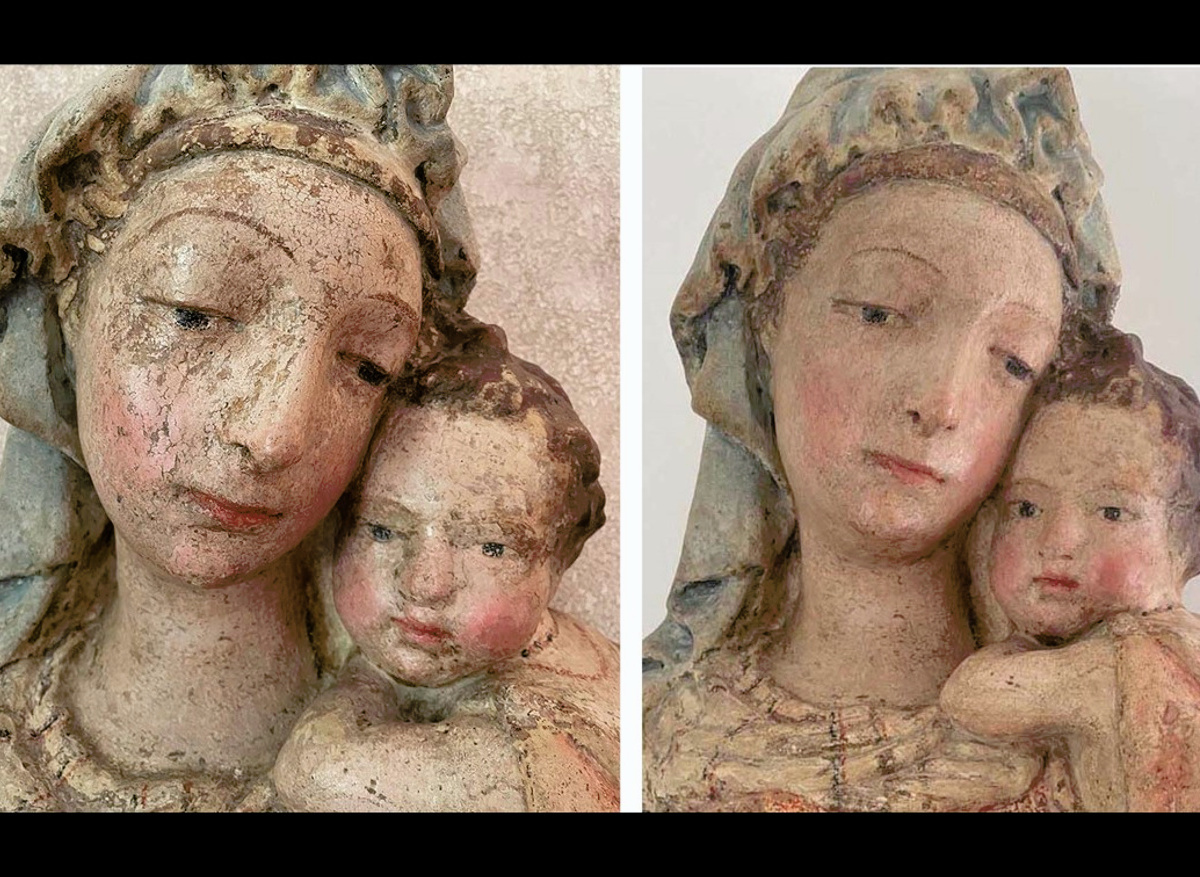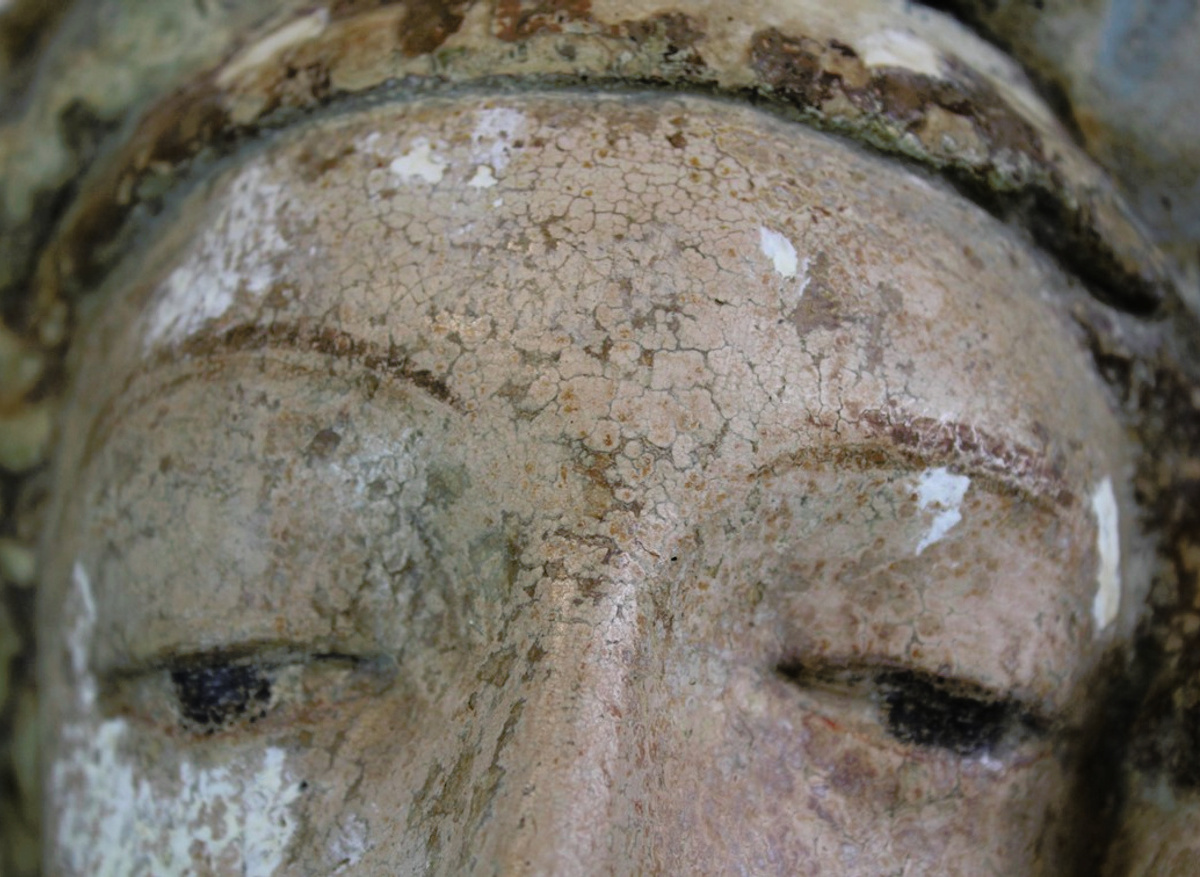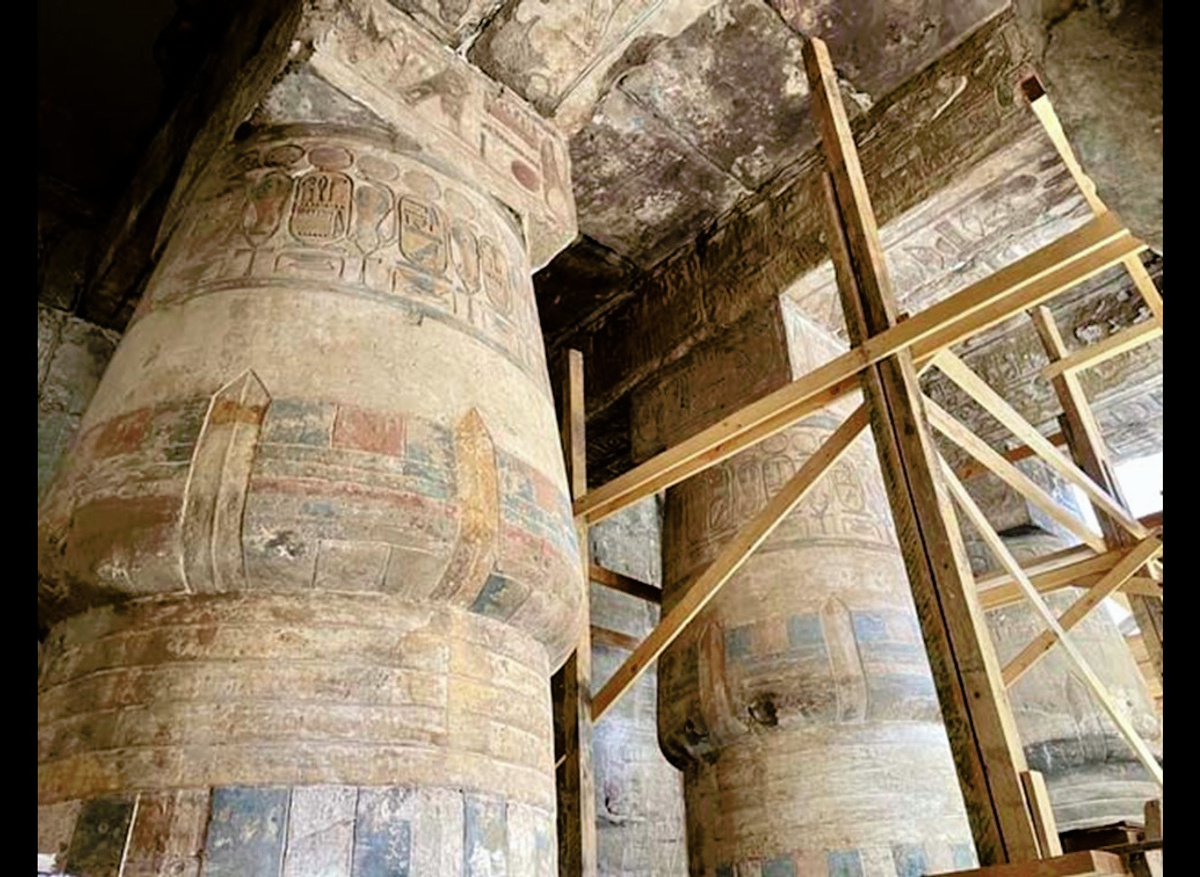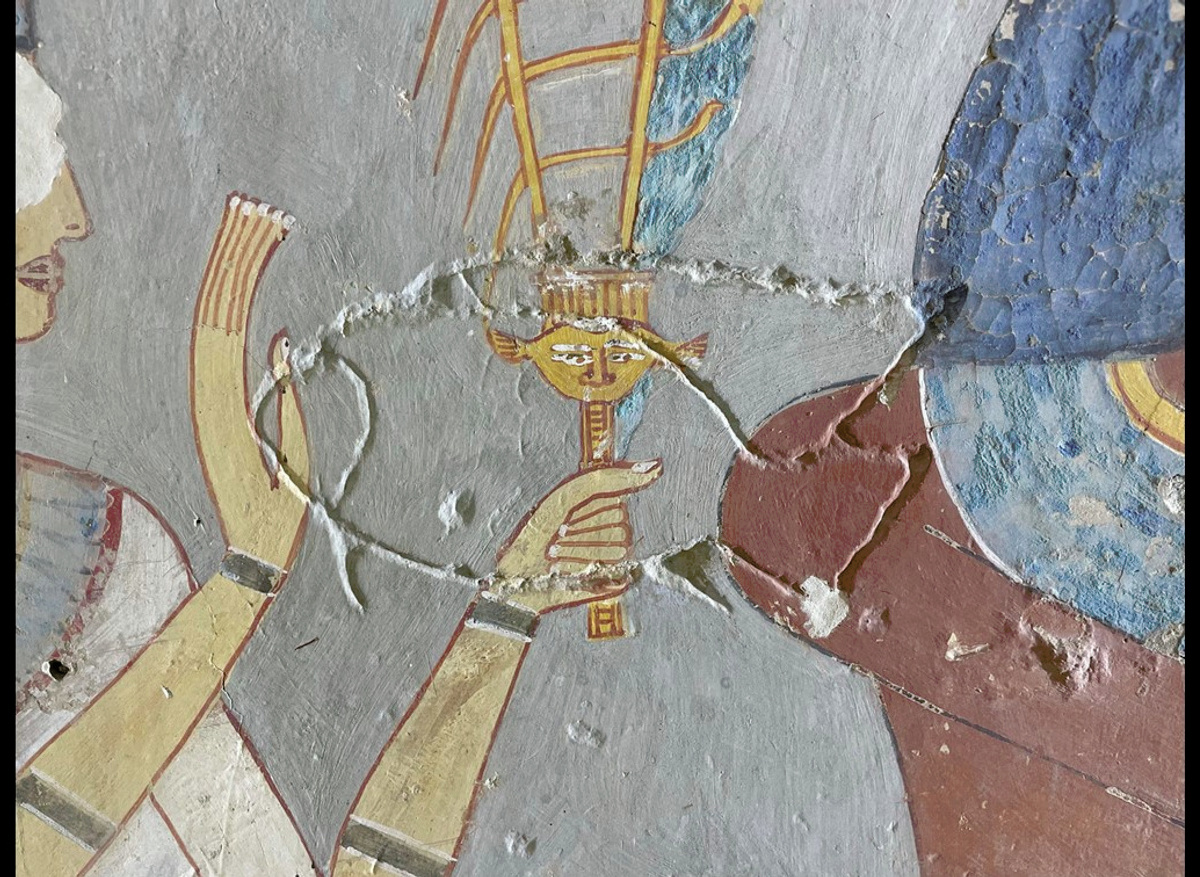An independent conservator with over 25 years of experience in conservation projects across the UK and internationally, I specialise in the conservation of wall paintings, and polychrome and gilded surfaces, which can be 3D. I have worked on projects for institutions such as the British Museum, the Benaki Museum Athens, the National Trust, Heritage Malta, Oxford University, and am a contract conservator for the V&A. I have worked on projects in Germany, France, Greece, Turkey and Malta as well as the UK. My experience includes museums, exhibitions, archaeological sites, and multiple wall painting projects in churches and historic buildings across the UK. I also work on smaller pieces in my Oxford-based studio and locally for Oxford colleges.
I have led major conservation projects in Egypt, including for the paintings in the tombs of Menna and Neferrenpet, at the Deir el-Medina, and at Elkab, as well as the polychromy at Khonsu Temple and the wall paintings at the Red Monastery. My work has been carried out for organizations such as the American Research Centre in Egypt, Université libre de Bruxelles, the Institut Français d’Archéologie Orientale, and Oxford and Yale Universities. I was part of the ICOM CIPEG Expert Group on the Tutankhamun Shrine Project and the project conservator for the British Museum on the EU-funded project “Transforming the Egyptian Museum Cairo”, conserving the wall painting from Tomb 100 at Hierakonpolis—the oldest known Egyptian tomb painting.
More information with details of my projects and practice, work history, and publications, can be found on my website: www.biancamadden.com.
Wadi es Sebua Wall Paintings
Conservation Treatment, Conservation Management, Research and Redisplay
This multidisciplinary project, led by Prof. Martina Ullmann (Ludwig Maximilians University Munich), focused on conserving wall paintings from Amenhotep III’s Temple at Wadi es Sebua, transferred and housed at the Egyptian Museum, Cairo, since the 1964 UNESCO rescue operation at the time of the creation of the Aswan High Dam.
Combining historical research, materials analysis (XRF, photogrammetry, RTI, and more), and archival studies, the conservation project assessed deterioration, past interventions, and conservation needs. With a team of conservators from the Egyptian Museum, I conducted examinations, formulated treatment plans, and led the conservation project to stabilise flaking paint, secure substrates, and reduce layers of dirt and surface deposits. The stabilised and conserved panels are now on permanent display in a purpose designed gallery space at the museum.
More information about the project can be found here: https://biancamadden.com/projects/conservation-and-research-historically-transferred-wadi-es-sebua-temple-wall-paintings/
Conservation of Piccotts End Paintings
Conservation Management, Consultancy, Treatment
15/16th Century Wall Paintings at Piccotts End, Hertfordshire
This is an on-going, largely preventive conservation project for this extremely rare scheme of late 15th or early 16th century wall paintings. The programme of monitoring, and treatment which I also undertake as required, follows an episode of historic water damage which had resulted in flaking and delamination of the painted surface.
C19th Painted Scheme, Oxford
Conservation and Restoration Treatment
In late summer 2022, a 19th-century decorative scheme was discovered beneath wallpaper in the Warden’s House at St Edward’s School, Oxford. Dating to the 1860s, it featured hand-painted birds, floral friezes, and stencilled motifs. The paintings had suffered multiple damages, many as a result of having been covered over and therefore invisible. There was also historic water damage in one corner, where an external downpipe (since repaired) had allowed water ingress into the wall, which had resulted in extensive loss of both the paint and plaster.
The conservation work stabilised and repaired water-damaged areas, removed deposited materials, filled losses, and recreated missing decoration. Smaller losses and repairs were reintegrated with the original. The paintings are now stable and secure and can be appreciated by visitors to this historic part of the building.
More details of the project can be found here on my website https://biancamadden.com/projects-portfolio/19th-century-wall-paintings-st-edwards-school-oxford/
Conservation Treatment and Research
Conservation of a Ghiberti Workshop Polychrome Madonna and Child
This project focused on research, examination, stabilisation, and refining previous retouching. The privately owned, recently purchased, sculpture had undergone restoration/conservation before the sale, including varnish removal and retouching. The new owner requested an assessment of these interventions.
Using magnification, raking and UV light, and D-Stretch analysis, I examined added and altered materials, past retouching, and the layer structure of the decoration, while also researching comparable Ghiberti workshop sculptures. Findings showed extensive past redecoration, with much of the original polychromy lost.
My conservation worked followed a minimal intervention approach, preserving the historical layers while balancing the very recent work. Work included surface stabilisation, toning distracting losses, and refining recent retouching with reference to earlier layers and other versions of the sculpture.
Consultancy, Research and Advisory Support
Complimentary conservation services I provide cover advisory support, research, condition surveys, risk assessments, and project management.
Notable projects of this nature include condition surveys at Deir el-Medina (Institut Français d’Archéologie Orientale) and Elkab (Oxford University). At Khonsu Temple, I undertook research, assessment and project setup for the conservation of architectural polychromy, as well as practical conservation and team management. Recent work at the Merenptah Tunnel, Abydos (American Research Centre/World Monuments Fund), involved research and condition assessments. More details of these and many other projects can be found on my website: biancamadden.com.
Biography
Bianca Madden
I trained in the conservation of plaster, stone, wood, and polychrome surfaces at the City & Guilds of London Art School before undertaking further study in Italy under a Leonardo da Vinci grant, with a conservator in Urbino. In addition, I hold an MSc in Sustainable Heritage from University College London, which focused on conservation methodologies, policies, and practices across sites, built heritage, and collections.
Since 1998, I have worked both independently and in collaboration with leading professionals and institutions. My projects span the practical conservation of polychrome and gilded surfaces, multiple wall painting projects, project management, consultancy and conservation for exhibition and redisplay.Client Testimonials
Precise, ethical, patient, and good-humoured. All necessary qualities for a wall-paintings conservator working in Egypt. Bianca Madden has all these requirements and more, and it has been a pleasure to work with her on multiple projects here since 1999. Most recently she has been a mainstay of the American Research Center in Egypt’s conservation work at the Temple of Khonsu in Karnak and the Osireion at Abydos, and I look forward to continuing this professional relationship for years to come.
Dr. Nicholas Warner RIBA
Director of Cultural Heritage Projects, American Research Center in Egypt
Bianca Madden worked on several important conservation projects for the Oxford Conservation Consortium. This included treatment of a 17th-century polychrome sculpture, a 19th-century pyrographic altarpiece, and highly 16th-century carved and painted panelling in a college Dining Hall. The latter involved micro paint sampling to establish the sequence of painting and determine the original paint survival. This analysis informed a careful approach to consolidation and cleaning, resulting in a stabilised and sensitively cleaned relief. All these objects were of great significance to the colleges and required a careful and rigorous approach. Bianca’s experience, judgement, sensitivity to the material, and ability to discuss and articulate the aims of treatment were crucial to the outstanding success of the work.
Jane Eagan ACR FIIC
Head of Conservation (retired), Oxford Conservation Consortium

